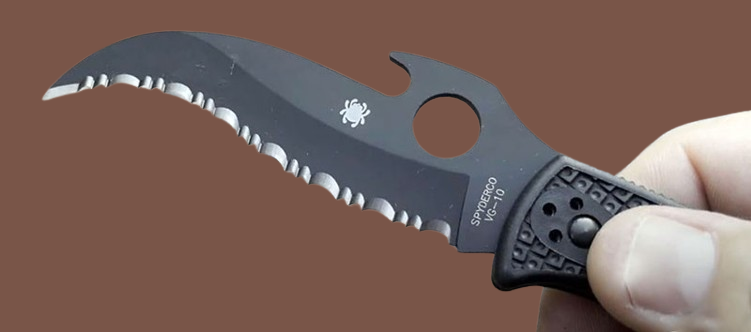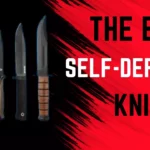Best Self-Defense Knife In 2024: In a world where personal safety is a growing concern, individuals often seek effective tools to bolster their self-defense capabilities. Among these tools, the self-defense knife stands out as a versatile and discreet option. However, understanding the nuances of its use and the legal considerations surrounding it is crucial. In this article, we will delve into the practical aspects of self-defense knives, exploring their history, proper usage, and legal implications.
Table of Contents
ToggleBest Self-Defense Knife In 2024

The concept of using a knife for self-defense is not a recent development. Throughout history, various cultures have recognized the knife as a fundamental tool for survival and protection. From the iconic Bowie knife of the American frontier to the Japanese Tanto carried by samurais, the knife has played a role in self-defense across diverse civilizations.
In modern times, the self-defense knife has evolved to meet contemporary needs. Today’s market offers a range of designs, materials, and features tailored to address specific self-defense scenarios. However, owning a self-defense knife requires a responsible and informed approach.
Choosing the Right Tool
Selecting a self-defense knife involves careful consideration of several factors, such as design, size, and legal regulations. The knife’s design should prioritize ease of use and accessibility. A folding knife, for example, offers portability and concealment, making it an ideal choice for everyday carry.
The size of the knife is another critical aspect. A compact and maneuverable knife allows for precise handling, which is essential in high-stress situations. However, it is essential to strike a balance between size and functionality to ensure the knife remains a practical tool rather than a cumbersome burden.
Understanding Legal Considerations of Self-Defense Knife
Before embracing the idea of carrying self-defense knives, individuals must familiarize themselves with the legal framework governing its possession and usage. Laws regarding knives vary widely, with different jurisdictions imposing restrictions on blade length, opening mechanisms, and even specific types of knives.
In the United States, for instance, individual states may have varying regulations, adding a layer of complexity to the legal landscape. It is crucial for individuals to research and comprehend the local laws governing the ownership and use of self-defense knives to avoid legal complications.
Proper Training and Technique of Self-Defense Knife

Possessing a self-defense knife is not a guarantee of safety; effective use requires proper training and technique. Engaging in training programs that emphasize realistic scenarios and stress drills can help individuals develop the skills necessary to react swiftly and decisively when faced with a threat.
The focus of training should extend beyond simply wielding the knife. Understanding distance, timing, and situational awareness are integral components of effective self-defense. Individuals should cultivate a mindset that prioritizes escape and evasion over confrontation whenever possible.
Strategic Deployment
The decision to deploy a self-defense knives should be a last resort, reserved for situations where there is an imminent threat to personal safety. A responsible knife owner recognizes the gravity of such a decision and understands that de-escalation and avoidance are preferable outcomes whenever feasible.
Proper deployment involves more than simply brandishing the knife. It requires a calm and calculated approach, considering factors such as the attacker’s intentions, the environment, and the presence of potential bystanders. The goal is to create an opportunity to escape rather than escalating the situation further.
Maintenance and Responsibility

Owning self-defense knives come with the responsibility of regular maintenance. Blades should be kept sharp, mechanisms well-lubricated, and the overall condition of the knife regularly inspected. A reliable self-defense tool is one that functions seamlessly when needed, and regular upkeep is crucial in ensuring its effectiveness.
Moreover, responsible ownership includes safeguarding the knife from unauthorized access, especially in households with children or visitors. Storing the knife securely and being aware of its location at all times is essential to prevent accidents and misuse.
Conclusion
The Best Self-Defense Knives In 2024, when approached with the right mindset and responsibility, can be a valuable tool in one’s personal safety toolkit. Its historical significance and modern adaptations reflect the enduring need for individuals to have access to effective means of protection. However, the decision to carry a self-defense knife should be accompanied by a commitment to legal compliance, proper training, and responsible ownership.
